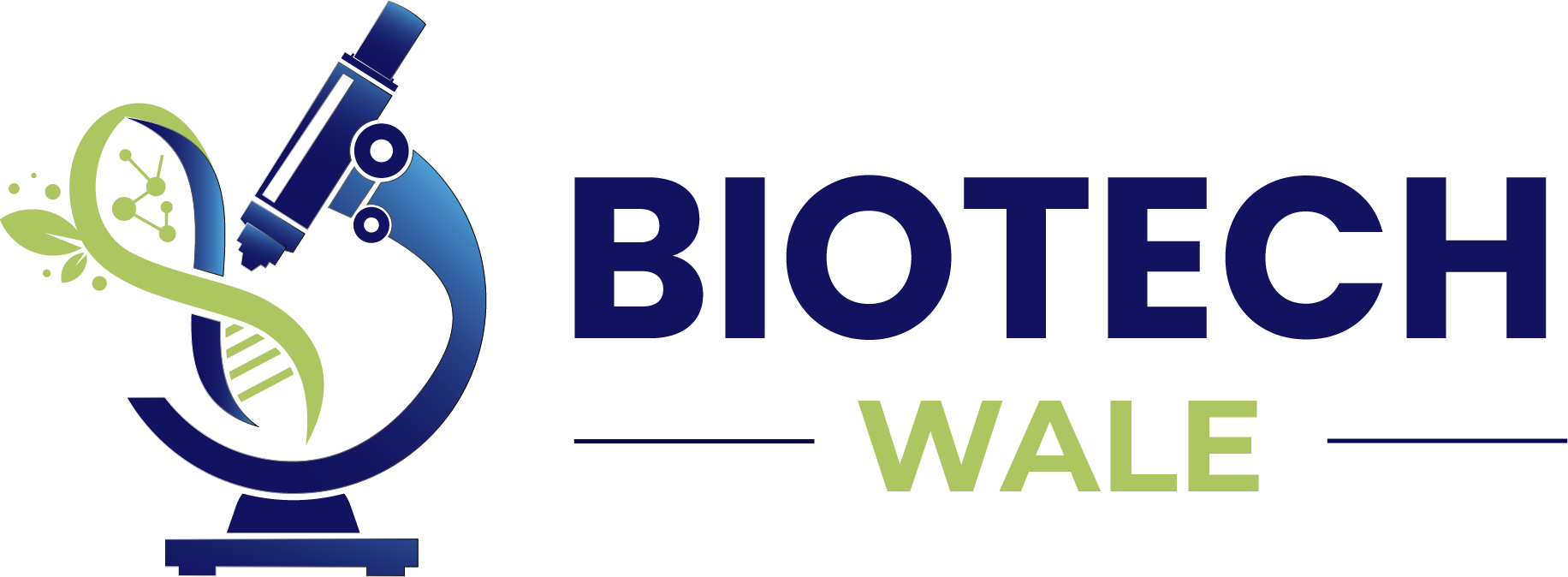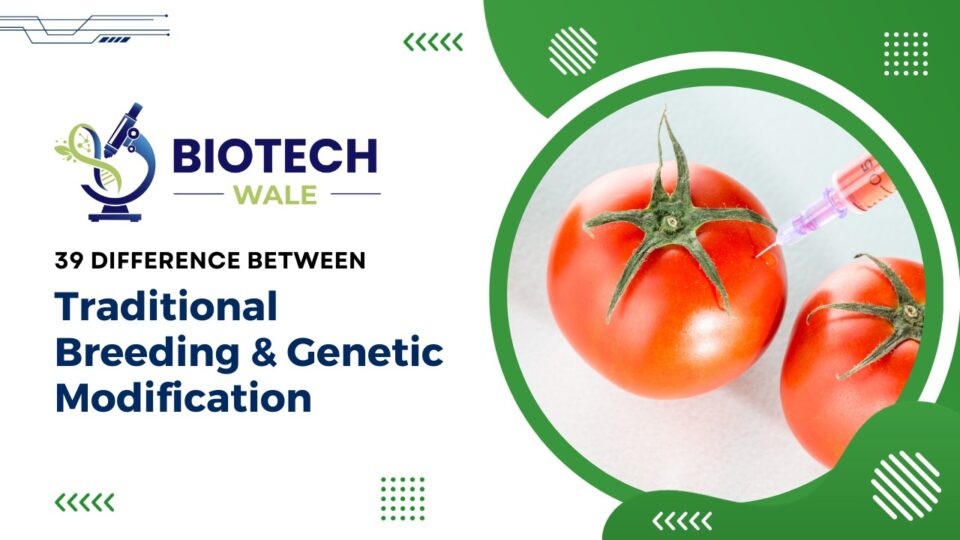Traditional breeding and genetic modification are two distinct methods for changing the genetic make-up of plants, animals, or microbes for a variety of reasons, including boosting specific features, increasing agricultural yields, or creating organisms that are resistant to disease. Each strategy has a unique set of tactics, benefits, and drawbacks.
Traditional breeding, sometimes referred to as conventional breeding or classical breeding, is a process for developing new plant and animal breeds by carefully regulated mating and the careful selection of parents who exhibit desirable characteristics. This strategy is the cornerstone of agriculture and animal husbandry and has been used by humans for thousands of years.
A new variation or breed can take several years to develop and release, but traditional breeding is a tried-and-true technique for enhancing animals and crops. In order to speed up the process and introduce particular traits more precisely, current biotechnological approaches like genetic engineering and marker-assisted selection have recently been used with conventional breeding.
The process of altering an organism’s genetic makeup in a way that does not happen naturally through mating or natural recombination is known as genetic modification, often known as genetic engineering or genetic manipulation. The DNA (deoxyribonucleic acid), the molecule that contains the genetic instructions for the creation, operation, and growth of all living species, can be altered precisely with this technology.
The use of genetic modification, a potent tool that enables precise adjustments to be made to an organism’s DNA, is widespread in biotechnology, agriculture, and medicine. Due to its potential advantages and ethical considerations, it is a topic of continuing discussion and regulation.
|
S.No. |
Aspects |
Traditional Breeding |
Genetic Modification |
|
1 |
Definition |
Selective breeding of organisms |
Direct alteration of genes |
|
2 |
Time Frame |
Takes many generations |
Can be done in a single generation |
|
3 |
Natural vs. Artificial |
Natural selection and mating |
Laboratory-based techniques |
|
4 |
Precision |
Less precise |
Highly precise |
|
5 |
Genetic Diversity |
Maintains genetic diversity |
May reduce genetic diversity |
|
6 |
Cross-Species |
Limited to closely related species |
Can introduce genes from distant species |
|
7 |
Speed of Results |
Slower |
Faster |
|
8 |
Predictability |
Less predictable |
More predictable |
|
9 |
Environmental Impact |
Minimal control over outcomes |
Potential for unintended effects |
|
10 |
Safety |
Generally considered safe |
Concerns about safety and regulation |
|
11 |
Complexity |
Simpler process |
Requires advanced technology |
|
12 |
Genetic Changes Size |
Larger genetic changes possible |
Typically smaller changes |
|
13 |
Ethical Concerns |
Fewer ethical concerns |
More ethical concerns |
|
14 |
Cost |
Lower cost |
Higher cost |
|
15 |
Time |
Longer time required |
Faster results |
|
16 |
Variation |
Dependent on natural variation |
Controlled and specific changes |
|
17 |
Heritability |
Relies on natural heritability |
Can manipulate heritability |
|
18 |
Traits Affected |
Limited to observable traits |
Can target specific genes |
|
19 |
Maturity |
Requires maturity of organisms |
Can be done at any stage |
|
20 |
Genetic Drift |
Susceptible to genetic drift |
Less susceptible to drift |
|
21 |
Testing |
Field trials and observation |
Laboratory testing and analysis |
|
22 |
Biodiversity Impact |
May maintain local biodiversity |
May impact local biodiversity |
|
23 |
Mutations |
May introduce unintended mutations |
Controlled alterations |
|
24 |
Cultural Acceptance |
Historically accepted |
Varies by region and culture |
|
25 |
Preservation of Traits |
Traits may be lost during breeding |
Traits can be preserved |
|
26 |
Hybridization |
Relies on hybridization |
No need for hybridization |
|
27 |
Inheritance Patterns |
Follows Mendelian inheritance |
Can alter inheritance patterns |
|
28 |
Plant Breeding |
Common in plant breeding |
Used in both plants and animals |
|
29 |
Genetic Stability |
Results may be less stable |
Results tend to be more stable |
|
30 |
Genetic Engineering |
Not considered genetic engineering |
A form of genetic engineering |
|
31 |
Regulatory Approval |
Fewer regulatory hurdles |
Stringent regulatory approval |
|
32 |
Crossbreeding |
Relies on crossbreeding |
No crossbreeding required |
|
33 |
Predictive Tools |
Limited predictive tools available |
Advanced predictive tools |
|
34 |
Resistance to Diseases |
Natural resistance development |
Targeted disease resistance |
|
35 |
Transferability of Traits |
Limited transferability |
Enhanced trait transferability |
|
36 |
Impact on Evolution |
Slower impact on evolution |
Can have a more rapid impact |
|
37 |
Ownership of Traits |
Traits remain in the public domain |
Traits can be patented |
|
38 |
Pest Resistance |
Slow development of pest resistance |
Rapid development possible |
|
39 |
Intellectual Property |
Limited intellectual property |
Potential for intellectual property rights |
Frequently Asked Questions (FAQ’s):
Q1. How is traditional breeding carried out?
Traditional breeding involves choosing and mating together organisms to produce offspring with the desired qualities. To get the desired result, this process is done over several generations.
Q2. What are the possible drawbacks and dangers of genetic modification?
Potential environmental effects, unforeseen repercussions, and ethical issues are among the worries. Concerns have also been raised concerning the concentration of seed patents and the monopoly that a small number of powerful corporations have over genetically modified organisms (GMOs).
Q3. What rules apply to GMOs globally?
Different nations have different GMO regulations. While some nations have strict rules, others have laxer ones. Guidelines for the evaluation of the safety of GMOs are provided by international organisations like the Codex Alimentarius Commission.
Q4. What are some instances of the advantages of genetically modified crops?
Examples include Golden Rice (enriched with vitamin A), Roundup Ready soybeans (resistant to the herbicide glyphosate), and Bt cotton (resistant to specific insect pests).
Q5. What restrictions apply to conventional breeding?
Traditional breeding has drawbacks such as delayed progress, reliance on genetic variation already present, and risk of passing on unwanted traits.





Average Rating